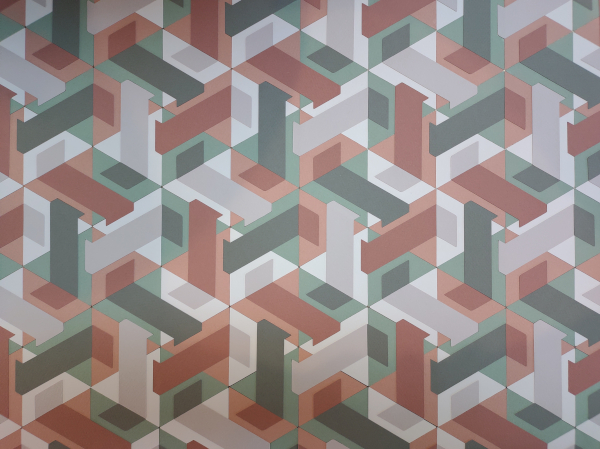This piece is an exploration of knots as lattices.
Each line segment traverses four triangles. The pattern contained in each group of four triangles includes two pairs of rotated copies.


I chose cut paper as the medium. Physically lining up a grid of cut triangles is a fool’s errand, so I chamfered the corners of the larger triangles. This meant that whatever substrate I used as a background would show through the gaps, so I started out by painting a panel gold.
I constructed the panel out of 1/8″ material with 2″ strips on the side.
Starting from the middle was the easiest approach since I could line up the edges of the first triangles perpendicularly to the panel. Then, I worked my way outward.
I let the edge pieces overhang and used a little extra glue to add rigidity to make it easier to trim the edges at the end.



This is a two-part piece. The small section indicated in the diagram here makes up the entire lattice. There are several versions of the fundamental component, such as the one mentioned earlier, so this is just the one I chose. However, with the use of six colors, I’m pretty sure this is as basic as it gets.
The second part was constructed much larger, since one at the same scale seems a little puny. This way, they end up being more similar in size.
I almost started out with cutting a hexagon first, but decided to be much more cavalier…

…with a circular saw.

You may be wondering if a saw blade just shreds the edges of paper like this. It does, but they were fairly easy to clean up with a knife.
Also, my plan was to seal both of the pieces with mulberry paper and varnish which gives a really cool look. The paper alone looks almost like it was just printed out. The final result looks a lot more natural.



This piece was on display at the City County Building in Knoxville, TN in 2024.
It was most recently on display at the d’Art Center in Norfolk, VA as a part of the Fibrous exhibition.